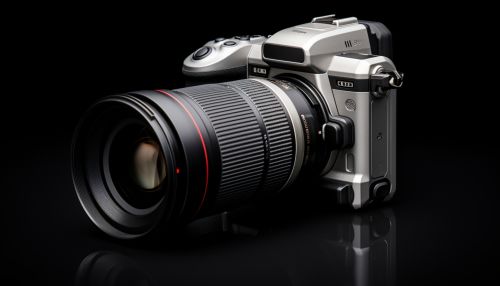Digital photography
Introduction
Digital photography is a form of photography that uses cameras containing arrays of electronic photodetectors to capture images focused by a lens, as opposed to an exposure on photographic film. The captured images are digitized and stored as a computer file ready for further digital processing, viewing, digital publishing, or printing.
History
The history of digital photography is marked by its rapid evolution. The first digital camera was developed by Kodak engineer Steven Sasson in 1975. It was a bulky device that captured black and white images at a resolution of 0.01 megapixels. The first commercially available digital camera was the DCS 100, released by Kodak in 1991.
Digital Camera Technology
Digital cameras utilize a sensor to capture light and convert it into an electrical signal, which is then converted into a digital image. There are two main types of sensors used in digital cameras: CCD and CMOS. Each has its own advantages and disadvantages, but both capture light in a similar way.
Image Sensors
The image sensor is the heart of the digital camera. It is a silicon chip that contains millions of photosensitive diodes, known as photosites, which convert light into an electrical charge. The two main types of image sensors are CCD and CMOS.
Charge-Coupled Device (CCD)
CCDs are a type of image sensor that transport the charge across the chip and read it at one location of the array. They are known for their high image quality and low noise.
Complementary Metal–Oxide–Semiconductor (CMOS)
CMOS sensors are another type of image sensor used in digital cameras. Unlike CCDs, CMOS sensors convert charge to voltage pixel-by-pixel, which allows for faster readout times and lower power consumption.
Lenses
The lens is an essential component of digital cameras. It focuses light onto the image sensor. There are various types of lenses, including prime lenses, zoom lenses, and macro lenses, each with their own specific uses and advantages.
Digital Image Processing
Once an image has been captured by the digital camera, it undergoes digital image processing to enhance the image and make it suitable for display or printing. This process involves several steps, including demosaicing, white balancing, and color grading.
Demosaicing
Demosaicing is the process of converting the raw image data from the image sensor into a full color image. This is necessary because each photosite on the image sensor only captures one color of light (red, green, or blue).
White Balancing
White balancing is the process of removing unrealistic color casts from images. This is necessary because different light sources have different color temperatures.
Color Grading
Color grading is the process of altering and enhancing the color of an image. This can be done for aesthetic purposes or to correct color imbalances.
Digital Photography Techniques
There are several techniques that are unique to digital photography, including high dynamic range imaging, focus stacking, and pixel shift resolution.
High Dynamic Range Imaging (HDRI)
HDRI is a technique used in digital photography to capture a greater range of luminosity than is possible with standard photographic techniques.
Focus Stacking
Focus stacking is a digital image processing technique which combines multiple images taken at different focus distances to give a resulting image with a greater depth of field than any of the individual source images.
Pixel Shift Resolution
Pixel shift resolution is a technique used in some digital cameras to increase the resolution of the captured image by shifting the image sensor by one or more pixel distances.
Impact of Digital Photography
The advent of digital photography has had a significant impact on the field of photography. It has made photography more accessible to the general public, revolutionized the field of photojournalism, and has had profound effects on the art world.
See Also


